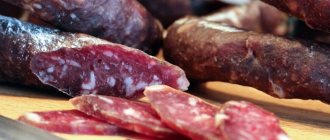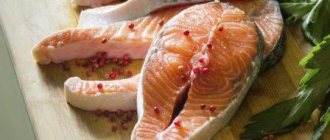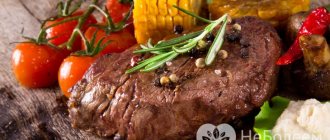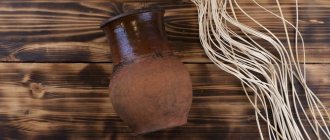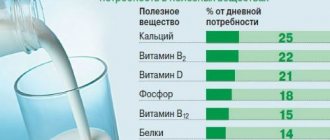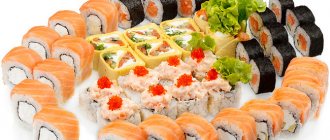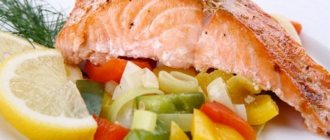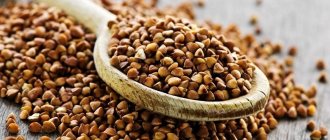In the modern world, pasta is the most popular product and is in great demand among the population. Today there are several types of this product. Thanks to pasta, we can always prepare incredibly tasty noodles stuffed with meat or fish, juicy cannelloni, spaghetti and much more. Their calorie content directly depends on the raw materials and method of preparation.
Today we will look at the energy value of this product, find out how many carbohydrates and proteins are in pasta. We will also study the varieties of these products. In addition, you will learn the beneficial properties and composition of pasta. At the end of the article you will find a small surprise - several simple and interesting recipes with pasta.
Product Description
What is pasta? These are products made in various forms, in most cases from wheat flour. The dough is kneaded using purified drinking water and then dried using special technologies. In some cases, manufacturers use rice or buckwheat flour. Many of us have seen colorful pasta on supermarket shelves. To obtain such a product, tomato paste, spinach or eggs are often added. The properties of such products directly depend on the type and quality of the ingredients used.
How many grams of carbohydrates are in 100 grams of pasta? It all depends on their variety, composition and preparation method. In this article we will return to this issue, but a little later.
In accordance with established GOST standards, products are divided into several categories:
- group A - pasta made from durum wheat flour of the first and second grades;
- group B - pasta from soft glassy wheat of the highest and first grades;
- group B - pasta products made from premium and first grade wheat baking flour.
Durum pasta contains slightly more gluten and less starch. But soft varieties include significantly more starch and less gluten. Proper and high-quality pasta contains virtually no fat or its amount is quite low.
Another type of this product is whole grain pasta, which is made from whole grains. The composition is striking in its high content of nutrients and minerals with such a low calorie content. However, before moving on to the carbohydrate content of pasta, we will look at its beneficial properties.
High calorie content
You can get acquainted with the energy value of a particular proposal from the manufacturer’s instructions on the packaging. But the average figure usually varies around 350 kcal per hundred grams. The level will fluctuate depending on the type of flour, as well as additional ingredients. One of the least calorie options is the mushroom solution. Sometimes savvy housewives even put them in vegetable soup to make it more filling.
Supermarkets offer an abundance of various types of pastas, where the composition of regular wheat preparation is interspersed with lentils, oats and even barley. But there is one secret. Even the most high-calorie dry shells can lose up to half of their value when cooked. By getting rid of extra calories, some believe that they have reduced the threat of not meeting their daily quota. But due to the fact that someone prefers to eat the main dish with an egg or cheese filling, the calorie content again increases significantly.
The same 50 grams of cheese adds about 350 kcal. The same picture can be seen with fans of the Soviet classics of the genre - “naval style”. Here the calories add up depending on the fat content of the meat, but the average level usually quickly creeps up to almost 300 kcal.
Benefits and harms of products
The main positive qualities of pasta include the following factors:
- fiber, which is part of the product, is easily absorbed by our body, gives strength and retains protein;
- the fat in pasta is unsaturated, so it breaks down easily and makes our skin firmer, healthier and more elastic;
- quick saturation of the body;
- pasta is good for digestion and the cardiovascular system, thanks to its fiber;
- the same fiber allows you to easily and quickly remove all waste and toxins from the human body;
- contains B vitamins, phosphorus, calcium, potassium, iron and so on.
So how many carbs are in cooked pasta? It all depends on the variety, but the average value ranges from 40 to 60 grams.
Do not forget that excessive consumption of pasta can lead to excess weight gain. In this case, it is best to use whole grain pasta. This is due to the high content of nutrients and minerals, low calorie content and a brighter taste. But the price for such products will be much higher.
Carbohydrates and the glycemic index
Traditionally, it is customary to divide carbohydrates into fast and slow. It all depends on the speed at which they will be broken down in the body and transformed into glucose.
Glucose is the main source of energy for the body.
You can find out the calorie content of dried fruits by simply following the link. Also find out the calorie content of dried fruit compote. If you play sports, then low-calorie sweets will not hurt you. Read more.
But how do you know which carbohydrates are fast and which are slow? What foods contain fast carbohydrates?
In order to calculate the rate of breakdown, a special indicator was introduced - the glycemic index or GI. Thus, foods with a high glycemic index are not as beneficial for the body as foods with a low GI.
You shouldn't eat them every day. Nutritionists suggest classifying such products as holiday food, that is, eating them infrequently.
The reason for this lies not only in a beautiful figure, but also in the enormous loads that the human pancreas experiences.
So, foods containing fast carbohydrates:
- sweets;
- starch;
- sugar;
- sweet drinks;
- instant soups;
- White bread;
- cookie;
- potato.
If possible, it is better to avoid these products altogether – exclude them from your diet. If this is not possible, it is recommended to eat them less often. Fast carbohydrates also include alcohol.
Interesting Facts
Before we get into how many carbohydrates are in pasta, we suggest you consider some interesting facts about this product.
So, a few facts about this product:
- 100 grams of raw pasta turns into a 250 gram serving;
- It’s best to stick to pasta made from durum wheat;
- the glycemic index of this product is 50. But if they are slightly undercooked, the index is reduced to 40;
- ideal pasta has a golden hue with an admixture of amber color;
- the structure of a quality product is quite dense, but at the same time flexible;
- When cooking good pasta, the water does not change its color, and the product itself does not boil, deform or stick together.
Italian film actress Sophia Loren, known for her slim figure and beauty, tells the public that she loves and constantly cooks pasta with various fillings. “I owe everything I have to spaghetti,” says the public figure.
Features of durum wheat or durum. Comparison of hard and soft flour
Wheat has thousands of varieties, but among this diversity, 2 large groups stand out: soft and durum wheat.
Soft wheat varieties are primarily grown in climates with high humidity. Such wheat occupies a large part of the market. The main producers are located in Russia, Ukraine, Western Europe, Kazakhstan and the CIS, as well as in Australia.
Durum wheat varieties are grown where the climate is drier. In the USA, Argentina, countries of Asia, North Africa and some regions of Russia.
In Russia, durum wheat is mainly represented by spring varieties. This wheat needs approximately 100 warm days to fully ripen. The harvest is usually harvested when the grain moisture content reaches 13%.
Not every climate is suitable for growing durum wheat. Durum spring wheat is sown and harvested mainly:
- In the Trans-Urals. In the forest-steppe part of the Chelyabinsk and Kurgan regions;
- On South. In the Krasnodar region and Stavropol region.
- In the southeast. In the Volgograd, Saratov and Orenburg regions.
- In the Altai Territory and Omsk Region
According to the head of the information and analytical department of the Russian Grain Union, Sergei Shakhovets, there is no exact data on the amount of durum wheat. It is not customary to specifically identify and take into account such varieties. Such statistics are usually kept at the regional level. This is most likely due to the fact that durum wheat is grown to order from large processing enterprises that produce pasta.
Wheat varieties differ from each other in appearance.
Durum wheat is in many ways similar to soft wheat, but has its own characteristics.
Features of durum wheat:
- Long and dense ear.
- The grain is elongated, hard and small in size. Enclosed in a floral film to prevent excessive shedding.
- The grain color is the same. Brown or yellowish tint.
- Flour from such wheat absorbs liquid well and does not go stale for a long time.
The best semolina and pasta are obtained from such wheat.
Representatives are, for example, the spring durum wheat varieties Lilek and Nikolasha, bred by the Research Institute of Agriculture of the South-East.
Features of soft wheat varieties:
- The ear has thin walls and more empty space in the culm.
- The grains are larger and softer.
- The color of the grain can be white, yellow, burgundy.
- Flour from such wheat absorbs liquid less well and is subject to rapid hardening.
Flour from such wheat is mainly used for making bakery and confectionery products.
Representatives are, for example, the varieties of winter soft wheat Guberniya and Kalach 60, bred by the Research Institute of Agriculture of the South-East.
If you “look inside,” the structure of soft and durum wheat is also different.
In hard pasta, the starch has a crystalline structure, while in soft pasta it is viscous. So, when cooking the latter, a large amount of dry matter and starch enters the water, which makes the water cloudy.
The current GOST allows no more than 6% of dry substances that pass into water.
Leading expert of the Institute of Agricultural Market Studies (IKAR) Igor Pavensky believes that grain production is directly proportional to the consumption of their processed products. And the amount of durum wheat that was grown in Russia can be calculated using data on the production of durum flour. To do this, you need to use in your calculations the conversion factor of produced flour into grain, which is approximately equal to 1000 kg of flour from 1330 kg of grain.
How many grams of carbohydrates are in pasta?
Now that we have learned about the beneficial properties and categories of the product, we can move on to its nutritional value.
Dry pasta contains:
- proteins - 10.4 grams;
- fats - 1.1 grams;
- carbohydrates - 64.5 grams;
- calories - 327 kcal.
How many carbohydrates are in boiled durum pasta:
- proteins - 3.5 grams;
- fats - 0.4 grams;
- carbohydrates - 23.2 grams;
- calories - 112.
However, do not forget that if you add butter or various sauces to pasta, the calorie content increases to 170 kcal. But everyone’s favorite dish, navy-style pasta, has about 230 kcal. Therefore, they should not be abused by those losing weight.
Now you know how many carbohydrates are in solid pasta, what their energy value and benefits are. Knowing this data, you can easily adjust your own diet. Many people mistakenly believe that after eating a portion of pasta, they will immediately gain excess weight. But this is not so, because products made from durum wheat allow you to eat your favorite spaghetti or noodles, while remaining slim and healthy.
Origin theory
Several countries at once claim to be called the real ancestors of pasta. Because of this, historians have been trying for years to find the real source, but progress in this field is moving extremely slowly.
Content:
- Origin theory
- Useful menu item
- High calorie content
- Guide to variety
- Guarding the figure
One of the most legendary stories on this subject is the story of the little daughter of a tavern owner who flourished in the 16th century. The little girl played with the dough cut for noodles, creating fancy bows and rings.
The father liked his daughter’s creativity, and he decided to develop this idea by offering visitors an unusual format for noodles that were popular in that era. The common people received the new product very well, which glorified the enterprising catering owner. His name was Marco Aroni. In honor of the smart man, they named his signature dish, which is now often prepared in a slow cooker to save time.
According to another theory, Marco Polo should be thanked for the spread of the unusual dish, who brought the recipe from the Middle Kingdom during his next expedition. Since then, a literal cult of pasta with cheese and other ingredients has settled in Italy. But to this day there is no exact evidence that Marco Polo told Italians about the delicacy so beloved by many today.
For a while, talk about who should give the palm of discovery subsided, until archaeologists got to the excavations of Etruscan tombs. At the burial site, experts discovered strange needles, which, upon closer examination, turned out to be tools for creating pasta. But since this is also just a guess by curious researchers, no one has decided to say for sure.
Identical disputes revolve around the origin of the term itself. According to some data, the word comes from the cradle of languages - Greek. Literally translated, makaria means “bestower of happiness.” According to other information, the Sicilians should be considered the authors of the term. They have an archaic verb that means handling dough, and it sounds very similar. But the most amazing thing is that if you just say the magic word “pasta” in any country, most people will understand what you are talking about, even with an eye to the accent.
Cooking the Italian way
Having figured out how many carbohydrates are in 100 grams. pasta, we can move on to the simplest and most delicious recipe.
So, the necessary products:
- tomatoes - 4 pcs;
- garlic cloves - 2 pcs;
- pasta - 200 grams;
- green peas - 200 grams;
- olives - 5 pcs;
- hard cheese - 50 grams;
- chicken egg - 1 pc;
- vegetable oil - 1 tbsp;
- basil - half a bunch;
- salt;
- ground black pepper.
If desired, tomatoes can be replaced with thick tomato paste.
Decoding information on packages
When losing weight, you should not buy pasta that contains the following components:
- Synthetic flavors.
- Salt.
- Traces of dairy products such as milk or whey.
- Eggs.
- Artificial colors and preservatives.
Additives such as paprika powder, natural tomato or spinach do not pose a threat to health and can be used in the diet. The packaging must contain the inscription “durum”, “durum wheat”, “group A” or “1st class”. Unlike pasta made from soft varieties, durum spaghetti bends perfectly and is quite durable. In order to break them, you need to make some effort.
Step by step process
Our actions are:
- Pour cold water into a small saucepan, place on medium heat and wait until it boils.
- Open the package of pasta and pour it into salted water.
- Cook according to the instructions on the package and drain in a colander.
- Pour boiling water over the tomatoes, carefully remove the skin and cut into small cubes.
- Blanch the green peas in salted water for about three minutes and pour into a colander.
- Wash the basil greens and chop them with a sharp knife.
- Peel the garlic cloves from the film and divide into small pieces.
- Grate the cheese on a medium grater.
- Grease a baking dish with vegetable oil and place pasta in it.
- Add tomatoes and peas, mix the resulting mass thoroughly.
- In a separate bowl, beat the chicken egg with spices and salt.
- Pour the egg mixture over the pasta, add grated cheese and place the mold in the oven for 15 minutes.
Before serving the finished dish, it must be garnished with chopped herbs and garlic. How many carbohydrates are in pasta? Approximately 62-65 in this dish per 100 grams.
Pasta diet for a slim figure
If we limit ourselves to these flour products without adding spices and sauces to them, then their calorie content allows us to consider this dish a dietary one. They are a source of large amounts of carbohydrates, so it is advisable to consume them before four o’clock in the afternoon, when our metabolism is at its peak.
Towards evening, the metabolic rate decreases significantly, which is why it is recommended to have dinner with protein-rich dishes and avoid high-carbohydrate foods. The body is not able to fully process carbohydrates received in the evening, and therefore it immediately “preserves” them in fat deposits.
- It is important to follow the rules of separate nutrition, according to which pasta should not be consumed together with meat products or fats (which include, in particular, cheese).
- In tandem with vegetables and mushrooms, pasta is perfectly absorbed by the body. From this point of view, the ideal dish would be a casserole of eggs, pasta, fresh bell pepper and cauliflower. The average calorie content of such a dish, which is suitable for breakfast, is about 140 kcal per 100 grams.
- Pasta with fresh vegetable salads is also recommended because it accelerates the process of burning fat cells and stimulates the normalization of metabolism. This means that the pasta dish is absorbed by the body faster and better.
- Don't be afraid to season them with hot spices (even black pepper, despite its high calorie content), as they speed up metabolism. Pasta additives such as garlic and mustard also work for this purpose.
- But try to reduce your salt intake, because it greatly inhibits water metabolism in the body, which leads to excess weight, as well as the appearance of swelling.
In order not to harm your figure, you should not indulge yourself with pasta every day, but you can eat such dishes twice a week. Although even a complete pasta diet has already been developed, suggesting that in one month of following it it is possible to lose five kilograms.
This regime assumes that a person can eat no more than three hundred grams of these tasty products per day (the indicated weight assumes the mass of the dry product). You won’t have to go hungry on such a diet, since spaghetti is quite nutritious even without various additives.
For dietary nutrition, spaghetti should be cooked with a spoonful of olive oil added to the water. But you cannot add oil or sauces to prepared pasta. If desired, hot spaghetti can be topped with egg white.
Also, the menu should be supplemented with lean varieties of meat and fish - up to one hundred grams per day. You can also drink a liter of low-fat kefir and eat about two hundred grams of cottage cheese per day. Make sure you consume no more than 1,300 kilocalories daily.
To enhance the effect of the diet, you need to regularly engage in some type of physical activity!
Another constant requirement is maintaining water balance, for which you need to drink one and a half to two liters of water daily. But don't be afraid of such a quantity. According to the World Health Organization, these two liters account for all the liquid consumed by a person throughout the day.
In the case of a diet, in addition to water, you can drink green tea without sugar or herbal decoctions. Also count them in these two liters, and take the remaining amount with clean still water.
Due to poor nutrition, it is better to drink a vitamin complex at the same time. You cannot follow this diet for more than a month. Since it is a type of strict diet, it is not recommended to resort to it more than once every six months.
Cooking method
What needs to be done:
- Following the instructions on the package, boil the pasta until tender and drain in a colander.
- Pour the required amount of cream into a saucepan and slightly heat the resulting mass.
- Grate the cheese and mix with cream.
- Add spices, salt and, if desired, some fresh herbs.
- Simmer over medium heat until the cheese begins to melt.
- Transfer the pasta to plates, pour in the sauce and serve.
You can bake fish or chicken thighs with this dish.
Fast carbohydrates before and after training
Experts recommend that athletes and active people consume complex or slow carbohydrates before training, but simple or fast carbohydrates after.
Why are fast carbohydrates recommended to be consumed after training?
The fact is that after significant physical activity, during the recovery period of the body, time is needed to replenish muscle glycogen.
It is important to fuel your muscles with fast carbohydrates!
The faster the process of recovery of the body and muscles, the more intense the next workout can be.
Within 4 hours after finishing your workout, you need to eat at least 100 g of fast carbohydrates , and within 24 hours - 600 g.
Excellent fast carbohydrates are banana and rice.
Step-by-step preparation
Our next steps:
- Place a saucepan of cold water over medium heat and bring the liquid to a boil.
- Pour the pasta into boiling water, add a little salt and cook according to the instructions on the package.
- As soon as the pasta is ready, place it in a colander and allow time for excess liquid to drain.
- Pour hot water over the tomatoes, peel them and cut them into cubes about 1 cm thick.
- We pass the garlic cloves through a special press.
- Heat olive oil in a frying pan, add tomatoes and garlic.
- Simmer the resulting mixture for about three minutes.
- Now pour the green beans into the frying pan, cook for five minutes and pour in the tomato paste.
- Sprinkle all the ingredients with spices, mix and remove the pan from the heat.
Transfer the pasta to plates and add green beans, tomatoes and garlic on top. For a brighter taste, you can add soy sauce. The amount of carbohydrates in pasta is about 60-40 grams.
Useful video
Watch this video about the difference between simple and complex carbohydrates:
Similar articles
- No-carbohydrate diet for weight loss: menu for the week...
One of the most popular is the no-carbohydrate diet for weight loss. It can be observed for a week, a month. The menu is quite varied thanks to a large list of permitted products. Reviews confirm that it is possible to get rid of 5-10 kg and quickly. Read more - Low glycemic index diet: menu, products...
If you choose a diet with a low glycemic index, then you need to be prepared for long-term use. The menu is developed separately for three stages. Products for weight loss are selected taking into account their GI. Read more
- Strict diet for quick weight loss: which is the most...
Nutritionists warn that a strict diet for quick weight loss is quite unsafe. Myths about losing 20 kg in a week are just myths. The strictest diet allows you to lose 1 kg per day. Read more



